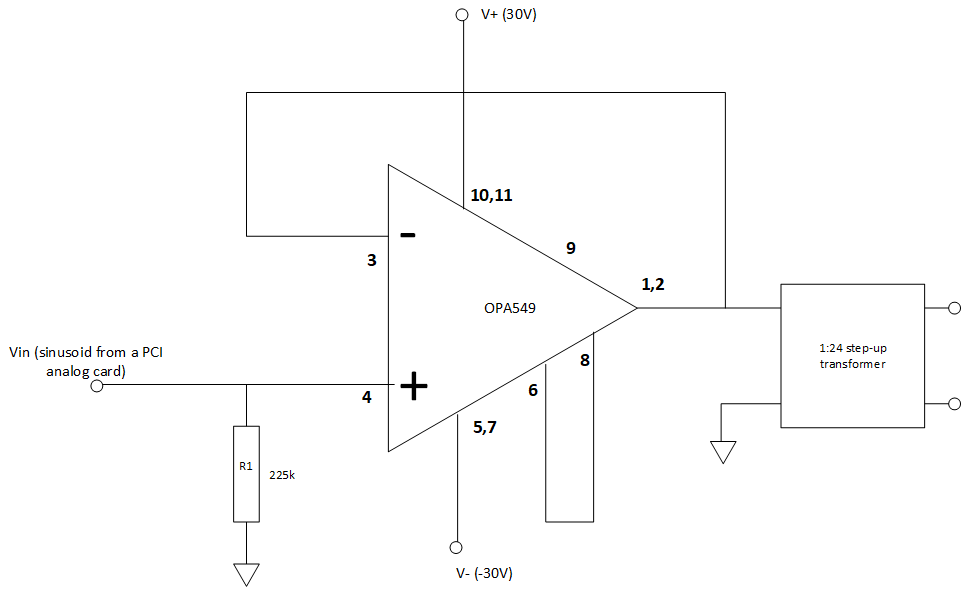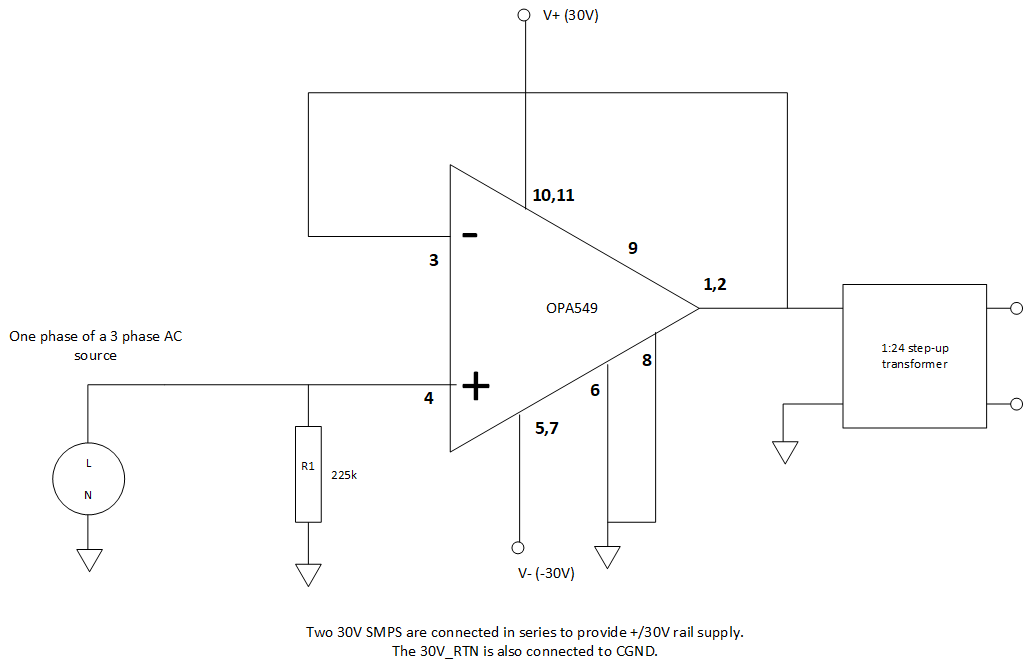I am using an OPA549 and a 1:24 transformer to step up a sinusoidal signal from a PCI analog output card for a HIL testing.
It worked fine for a while; but recently the PCI analog output card was damaged. On observing the physical card, we suspect some return currents might have flown into the card from the op-amp circuit. Did I miss anything important in the grounding/referencing in the circuit below?





